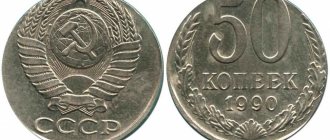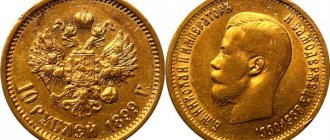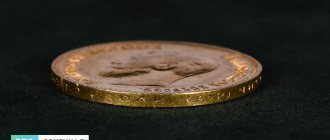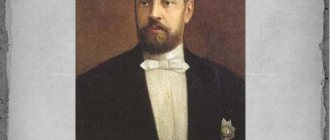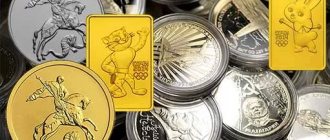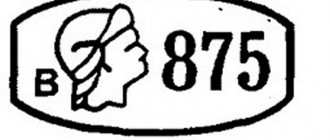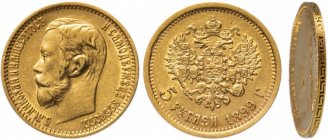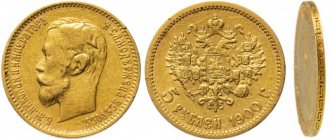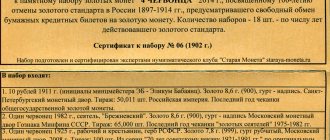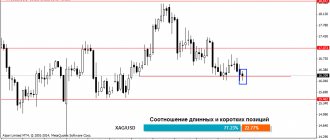The history of our country is rich and varied. Each historical milestone brought interesting facts. So, in numismatics, an amazing year is 1922, when the Civil War was already coming to an end, and at that time the mint in Petrograd began to issue a new coin. 50 kopecks in 1922 were minted from precious metal. By the way, this coin was the last one to depict the coat of arms of the RSFSR. And from the next year, coins appeared with the symbols of the Soviet Union.
Description of the coin
The 50 kopeck coin began to be minted in 1921. For its manufacture, 900 silver was used, from which the blanks were first prepared. 50 kopecks of 1922 were issued with a diameter of 26.67 centimeters and a weight of ten and a half grams. Her appearance was also interesting. So, on the obverse of the coin there was a depiction of the country’s coat of arms with a border, and there was also the famous inscription-call “Workers of all countries, unite!”
The reverse was decorated with a star, in the center of which was the number “50”. A crown of oak leaves was also depicted; between them it was indicated that this was a coin of fifty kopecks. The edge had an inscription stating that it was made of pure silver metal and the weight of such a coin was 10.5 grams. The designations were also listed here: AG and PL.
Story
The coin began to be issued at a difficult time for the young Soviet country. The civil war was still going on, but was nearing its end. In those years, before the innovations, there was no question of issuing banknotes, so they acted the old fashioned way: they minted coins from silver. Fifty kopecks was no exception.
The first batch was released in St. Petersburg in 1921 at the Tsar's Mint. Of course, these were not pure silver coins: only 90% was high-grade metal (900), and 10% was impurities. If we consider that its mass (weight) is 10g, then there was 9g of silver.
Types of fifty dollars
The abbreviation on the edge indicated that the 50 kopeck coin of 1922 (silver) had several types. This happened due to the fact that, starting from 1921, mintmaster Arthur Hartmann was in charge of the minting of banknotes at the mint in Petrograd. His position was also called the head of coin processing. From the first and last name of this person, the AG signs appeared on the edge of the coin. Few banknotes with such markings have survived, but all of them currently have a high price.
But by the end of 1922, this abbreviation on the edge was changing, and now the letters PL appeared. This was justified by the fact that Hartmann resigned from his post and was replaced by Pyotr Latyshev. In the past, Pyotr Vasilyevich held the position of manager of the Medal and auxiliary part of the same mint in Petrograd. When a campaign was launched in the young republic to remove employees of the tsarist regime from high positions, Latyshev was also fired.
And only many years later, when this company with layoffs was still recognized as a mistake, Pyotr Vasilyevich was offered to become a manager again. More of these coins with the letters PL have survived, so at present their price is slightly lower.
Two varieties of the coin are known to all collectors, and in the catalog they are written as Fedorin 2 and, accordingly, Fedorin 3. There is also a third variety. So, in 1922, several coins came into circulation, where the edge turned out to be completely smooth and without any marks. Currently, this particular 50 kopeck silver coin from 1922 is considered rare.
Varieties
If you look at the catalogues, the cost of a 1922 50 kopeck coin (AG or PL) varies and depends on the type of specimen presented. Let's look at the most common positions.
AG
These are the very first fifty dollars, the circulation of which was carried out by mintzmeister A. Hartmann. His initials “AG” are visible on the edge. In addition to the initials, the amount of silver spent on making the coin is stamped on the edge of the coin, as was customary during the Tsarist Empire.
PL
50 kopecks 1922 submarines differ from the previous version only in the changed inscription on the edge. Instead of AG, PL is indicated. The fact is that this edition was produced by another mintmaster - Pyotr Latyshev. Hence the change in initials.
The price of silver 50 kopecks from 1922 may vary significantly and depend on the type and condition. In addition to the main varieties listed, there are other valuable specimens presented in single copies. They are considered rare and are of particular interest to collectors. The price for some items can be very significant and vary from several thousand to several million rubles.
- Smooth edge. There is no inscription on the edge. The reason may be an ordinary defect, or it may be a fake. The edge can be sharpened by hand, in which case the coin is not rare. Numismatists are interested in samples with “factory” defects, the weight of which will correspond to the established norm of 10g.
- Incomplete inscription on the edge. When minting 50 kopecks, some letters could “fall out”. This is considered a coin defect or defect. There are few such specimens, but they can still be found. They are preferred by numismatists to conventional analogues, and therefore cost several times more.
- Test sample. This is the most desirable and expensive copy! Test coins of 50 kopecks were copper and weighed less than silver ones. There are very few of them, so they are of particular interest to collectors and are worth a lot of money. The price of such a banknote reaches 2 million rubles.
For information! There are known coins that were made specifically for collectors. They are presented with a polished, almost smooth, embossed finish. They were produced by order through the Soviet Philatelic Association.
Rejected coins
It is known that despite the fact that there was strict control over the quality of the 50 kopeck coins of 1922, sometimes there were defective copies. Thus, one of such marriages was considered to be the absence of the letter “a” at the end of the word “silver”. Now collectors who dream of purchasing such a rare, albeit defective, coin are required to offer three times more than for one that was minted according to all the rules.
This type of defect includes a smooth edge. Surprisingly, this marriage now has two explanations. The first option is that the 50 kopeck coin of 1922 did not fit into the edge ring during production. But this happens very rarely. The second explanation is that the counterfeit was made specifically in order to later pass off such a coin as rare. After all, rare coins are always valued by collectors.
And there is another well-known defect of the 50 kopeck coin (silver), which does not even need to be explained. Sometimes such a banknote weighs less than usual. This fraud was carried out specifically to steal precious metal.
Characteristics
The coins have a clear circle shape, with a diameter of 26.67 mm and a thickness of 2 mm. This standard was adopted during the reign of the Tsar and was preserved until those times. The fifty-kopeck sign was quite voluminous with a complex and pleasant design.
Obverse
The obverse of the stamp contains the coat of arms of the RSFSR in the center with classic images of the hammer and sickle. The background is the sun's rays. All this is depicted on a shield, on the sides of which there are ears of wheat. The coat of arms is enclosed in a frame of raised dots.
An abbreviation with the inscription: “RSFSR” is located at the bottom, and a slogan calling for the unification of the proletarians of all countries runs along the edge.
Reverse
The reverse of the stamp is no less remarkable. In the center there is a five-pointed star with a circle in the middle, occupying almost the entire area. The number “50” is visible in the circle, indicating the denomination of the banknote. The year “1922” is stamped between the lower star rays, indicating the period of issue of the coin.
Around the star there is a frame of convex dots, which is repeated along the edge. Between them at the top there is an inscription - “50 kopecks”. On the sides there is an original ornament embossed, represented by two wreaths connected at the bottom by a ribbon: on the right side - from oak branches, on the left - from laurel branches.
Counterfeit banknotes
But it is already known that 50 kopecks from 1922 exist not only with defects, but from time to time counterfeits also appear. Currently, such fakes are divided into two groups. The first group of such banknotes was made from tin by scammers, and they successfully put them into circulation. But these fakes dated back to 1922.
Currently, counterfeits of this coin are also being made. Modern ones can be easily identified by the fact that the font is broken, the edges of such coins are usually always smooth, and they are also made from artificial patina. It’s hard not to see this for an experienced collector, but a beginner can be deceived.
Collectors also know about a series of counterfeit fifty-kopeck coins with “polished coinage.” These banknotes were issued in 1922 specifically for collectors. They were minted in small quantities, so the price for this particular coin is always high.
Fakes
Counterfeits, or “falsies” as they are called, are divided into groups. One of them includes banknotes skillfully made by folk craftsmen. They were usually created during the period when the coin was in use. Criminal activity at all times was characterized by ingenuity and could not ignore money in denominations of 50 kopecks. They were cast from specially prepared molds. Some samples were so well executed that it was difficult to discern a fake at first glance.
The second group includes fakes that pose a danger to collectors. If the fifty-kopeck coins of the first group were created for scrolling in circulation, then the coins of the second group were prepared specifically for sale in order to mislead lovers of rare specimens. Such copies are usually without an inscription on the edge, or with “clumsy” execution. They are quite difficult to distinguish from real coins. They are skillfully “aged” by applying a patina, so they look like money with “age.”
Price
The price of 50 kopecks of the RSFSR in 1922 varies from 300 rubles to one hundred thousand. All these banknotes can be divided into two groups according to the abbreviation on the edge. AGs are valued by collectors much more than PLs. Hence the price of the first coins is higher. If the coin has not yet been in circulation, then its price can reach fifteen thousand rubles.
The price of defective coins is flexible, so it will depend on the demand by the collector. If at this time interest in it increases among many coin collectors, then its price immediately begins to rise.
How to get this coin?
The prices shown are for the current state marked Uncirculated. The sale/purchase of 50 kopecks is usually carried out at open/closed auctions. How are the latter different? As a rule, open auctions are accompanied by a short registration that does not require the indication of general information about the collection and the purpose of purchasing the coin of the mentioned denomination. Closed ones, on the contrary, are accompanied by a huge amount of information, not necessarily reliable. It is also worth noting the possibility of withdrawing a certain percentage for a completed transaction. The possibility of purchasing directly from someone else has also not been canceled.
Price of fifty dollars 1922 at auctions
Despite the fact that the Civil War was still going on when the 1922 coins were issued, the circulation of the 50-kopeck silver coin of that time amounted to more than eight million copies. AG has always been rated higher by collectors, since during the war years many of these coins were melted down, and there were not so many copies anymore.
If the fifty kopeck piece turned out to be of good quality, but still had minor defects, then at auction it can currently be sold or purchased for three hundred rubles if it is a PL, and six hundred rubles if it is an AG. If the quality of the coin is very good, where there are very, very few defects, then at auction it is put up for about four hundred rubles for PL and about 1,300 rubles for AG. If such a coin is of good quality without defects, then its value also increases. So, a PL will already cost eight hundred rubles, and the price of an AG can reach up to two thousand rubles.
If a coin of 50 kopecks has a stamp shine or has capsules, then it can be even more expensive. So, for such a PL coin they usually give from six to twenty thousand rubles, and for AG you can bargain from thirty to one hundred thousand rubles. Fifty dollars with a smooth edge can recently be purchased at prices ranging from 80,000 to two hundred thousand rubles. Such a high price for these particular coins is justified by the fact that there are now many fakes.
The coinage was valuable because it confirmed the significance and power of the new Soviet government, and on the other hand, it became a milestone in the transition to a powerful country. That is why a coin from this time is a rarity.
